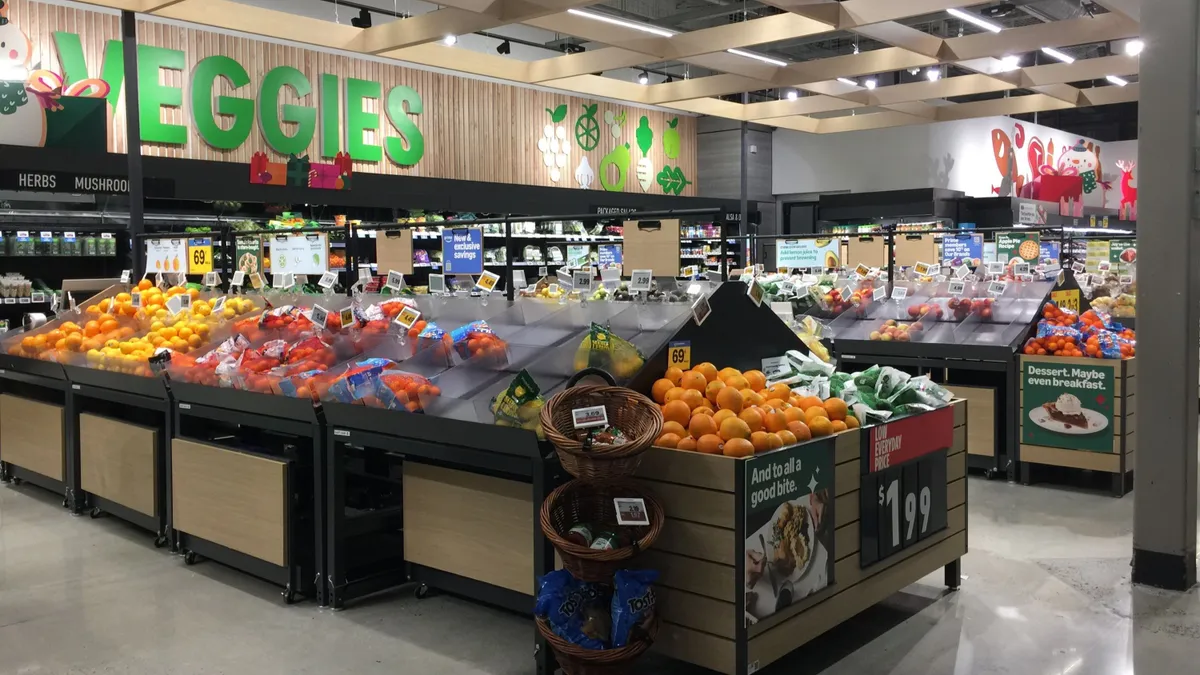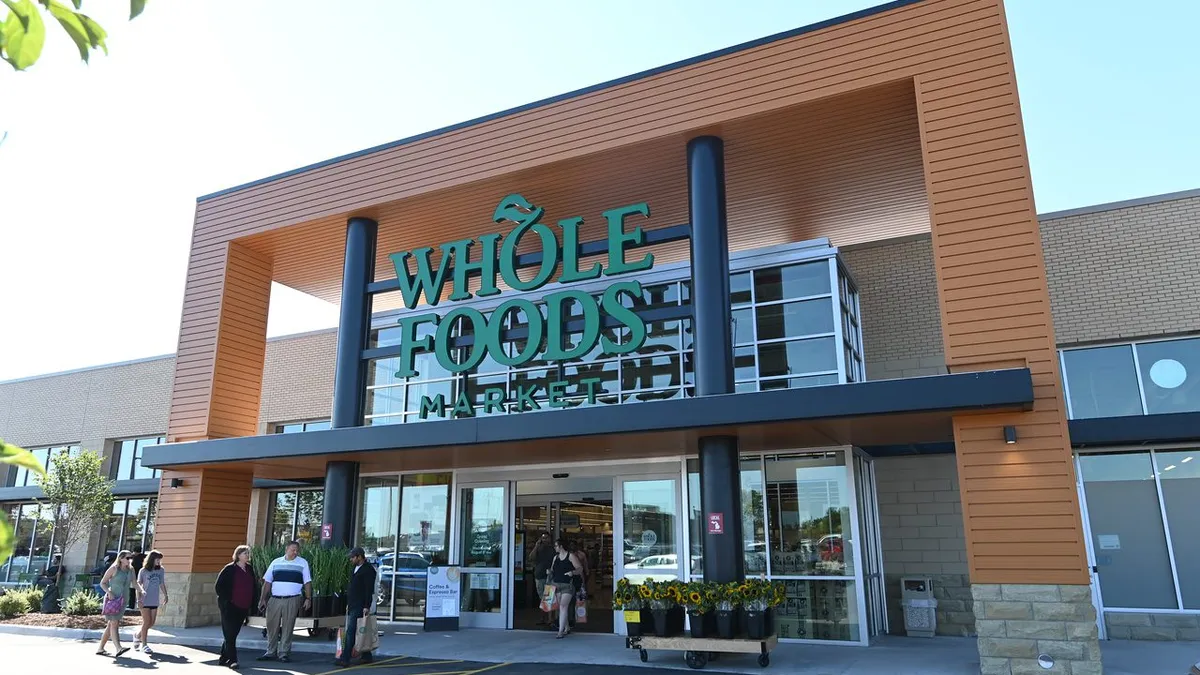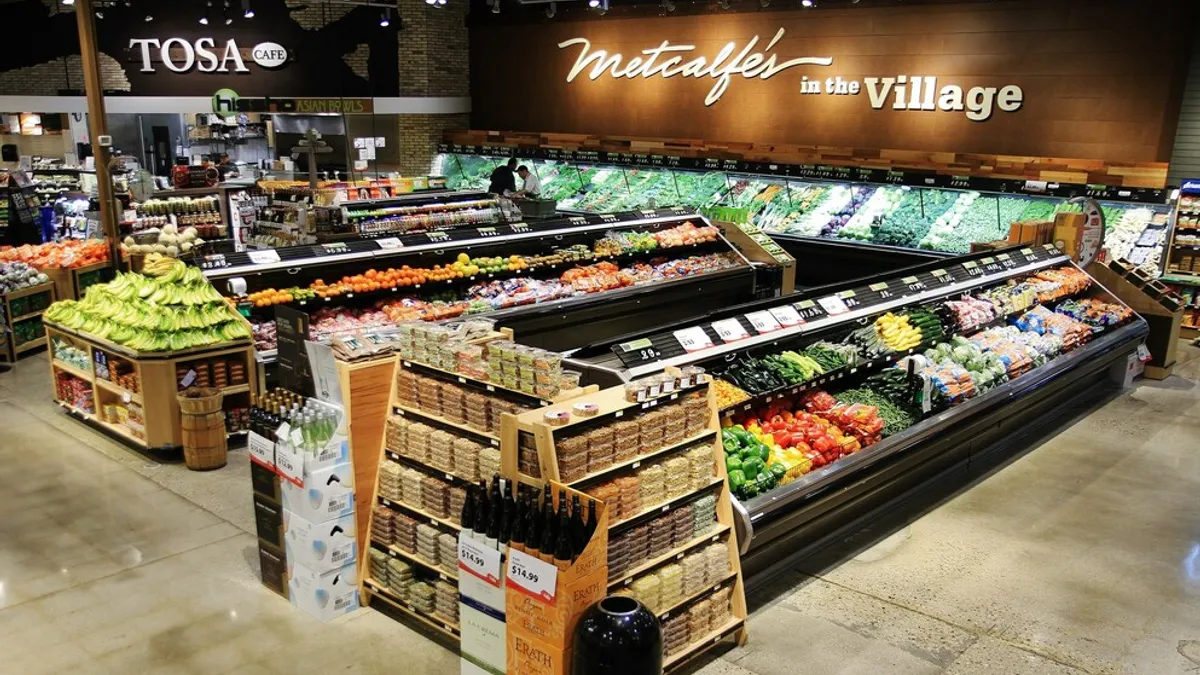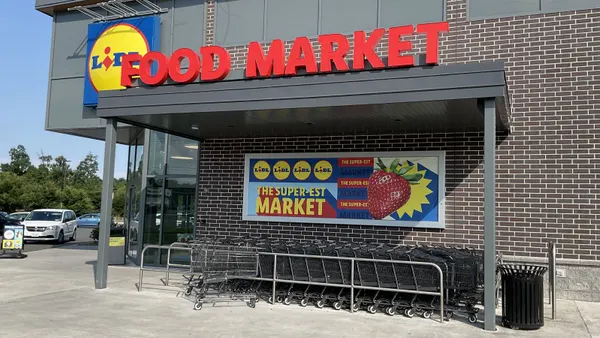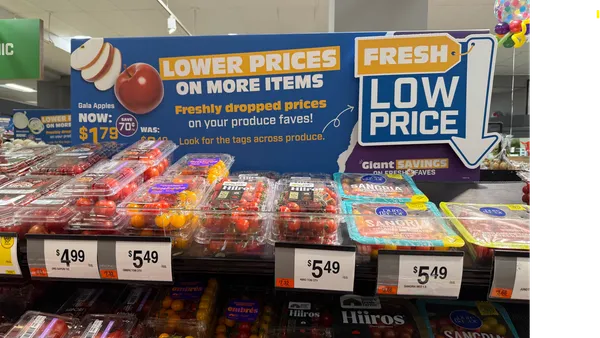Traditional supermarkets are falling out of favor with younger generations, with people in those cohorts increasingly turning to discount retailers to buy groceries, according to survey data published Tuesday by The Feedback Group.
Gen Zers, millennials and Gen Xers are most partial to Walmart, with more than a fifth of people in each of those groups who participated in a poll the research firm fielded this spring saying they most recently shopped for food at the mass retailer.
Those generations also showed a preference for Aldi, with Gen Zers especially likely to have made their latest grocery shopping trip at that chain. Twenty-two percent of shoppers in that group shopped for groceries most recently at Aldi — the same proportion that did so at Walmart.
Meanwhile, just 8% of Gen Z shoppers in the survey said their most recent grocery shopping trip was to a supermarket, while 11% and 14%, respectively, of millennials and Gen Xers said the same.
In a reflection of the fraying relationship between younger shoppers and traditional grocers, supermarkets fell from the second-most shopped format among both millennials and Gen Xers in 2024 to close to the bottom of the list of retailers where those shoppers most recently bought groceries this year, The Feedback Group reported.
While supermarkets might be losing ground with younger shoppers, they remain popular with older consumers, the survey found. Twenty-eight percent of baby boomers and 31% of people in the Silent Generation who took part in the research said they shopped for groceries most recently at a supermarket, ahead of all other formats. Walmart came in at No. 2 among members of both generations, well ahead of Aldi.
The Feedback Group found that shoppers assigned greater importance to food quality and cleanliness than to value for money when evaluating supermarkets. Shoppers who used staffed checkout lanes also indicated that they were more satisfied than people who used self-checkout.
The research firm also noted that shoppers are tilting toward digital media as a way to learn about sales at grocery retailers. Fifty-two percent of people in the survey, which drew responses from about 1,100 shoppers, indicated they looked at digital circulars, up from 48% last year and 44% in 2023. By contrast, 43% said they consulted paper circulars.
Almost half of participants said they paid attention to loyalty program promotions, but just 12% indicated that they checked social media for promotions.
Just over a third of survey respondents said they used a mobile device while shopping to identify specials, consult a rewards app or check a shopping list.
The Feedback Group also identified a correlation between sensory aspects of the shopping experience, such as aromas, music and food sampling, and people’s receptiveness to spending more. For example, people in the survey who said they noticed “a pleasant food aroma at least somewhere in the store” spent 25% more than they otherwise would have.



